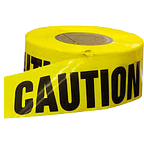Going Interior: Inside a Structure Fire
The Real World vs. Hollywood — Did you ever wonder what Firefighters face inside a burning building? Almost everyone understands the difference between the “real world” and “Hollywood,” right?
Movie makers have the ability to transport the viewer to a realm full of reality, or transport us to a galaxy far, far away…. The 1991 movie by director Ron Howard, entitled Backdraft, seeks to straddle the fence between reality and fantasy. By reality, we view the everyday struggles of two brothers each facing inner and outer battles to find their respective place in the Chicago Fire Department. By fantasy, we are offered a glimpse into what it’s like to be inside a building on fire. But does Backdraft truly portray what it’s like inside a fire? This clip from Backdraft is how Hollywood views fighting fire (and saving people): Backdraft Movie Clip
Do you want to know what it’s really like for firefighter’s inside a fire? Check this out: Actual Firefighter Clip
Here are the real world answers to some of the questions that people often ask about the conditions faced by Firefighters inside a structure that’s on fire:
How hot is it inside a fire?
House fires can reach temperatures up to 1100 degrees Fahrenheit. That’s like turning your oven up twice as high as it will go. Extreme temperatures like this force firefighters to crawl or “get low” in order to enter a house fire.
Can you see, and if so, how far?
In a well-involved house fire, the smoke can completely obstruct the view, literally not being able to see your hand in front of your face! The visibility is almost zero, when compared to how Hollywood portrays a pretty clear environment in the Backdraft clip, huh? But keep in mind, if the movie director made it realistic, the camera couldn’t see the actors!
Do you always wear your facepiece (air supply)?
The heated and toxic smoke is literally choking; and the heat from the fire itself makes working inside untenable without an air supply. Firefighters who encounter a fully involved house fire, and “go interior,” (slang for making an aggressive interior attack with a fire hose) have to wear and use their Self-Contained Breathing Apparatus (SCBA) to survive these conditions.
How heavy is the fire hose?
Fire hose can be heavy. When it is full of water, or “charged,” a 250’ hose weighs 1,025 lbs! And that hose gets even heavier when it is wet. But it is the essential tool inside a house fire. It puts the fire out, keeps firefighters relatively safe (by providing a means to extinguish fire), and can sometimes be used to push smoke out of a structure (called “hydraulic ventilation”).
Why do so many firefighters go inside, and what are they doing?
At the scene of a house fire, every firefighter has a job to do. “Truck Company” members go inside to perform several tasks, including: conducting a rapid and quick search for victims (called a primary search), looking for the extent of the fire (into void spaces, walls, and attic spaces), and ventilate smoke from the structure. The “Engine Company” members are the ones deploying fire hoses into the structure to extinguish the fire.
What happens when you put water on the fire?
When a firefighter finds the main body of fire, called the “seat of the fire,” they apply water to the fire, sometimes referred to as “blacking out the fire.” This term is used, because when a firefighter applies water to fire, SOMETHING AMAZING HAPPENS! Water has the ability to expand 1,700 times its volume, essentially turning the water coming from the hose into steam, which smothers the fire, as well as cooling the burned surfaces. The steam banks down to the floor as it expands, and can sometimes cause steam burns to firefighters. On the outside, it’s why the smoke turns colors, from dark smoke to light gray or white smoke, which is the steam production. See the picture below for a good depiction of the application of water to fire.
While Hollywood seeks to glamorize the high-risk occupation of firefighting, in the end such depictions underplay the true environment inside a fire: hot, smoky, disorienting, and dangerous.
This article was written by Lt. Charles Cavnor (Dallas Fire and Rescue), a member of Inside the Yellow Tape. Inside The Yellow Tape is pleased to bring you this article, not just taking you inside the yellow tape, but inside a building on fire! For more informative and exciting articles, view all our articles at: https://medium.com/@insidetheyellowtape
